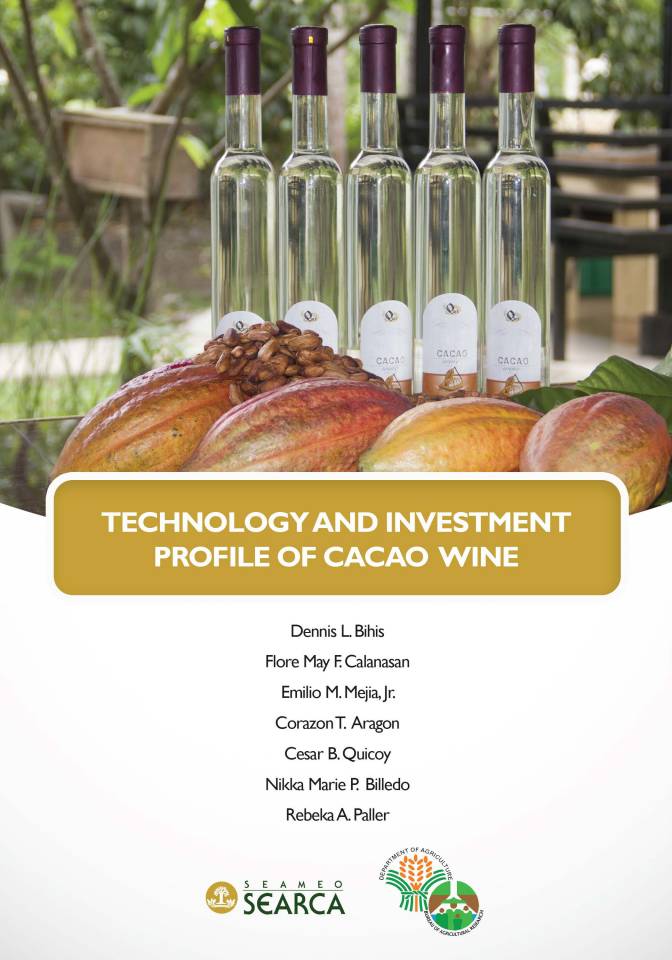The Philippines possesses a competitive advantage among Asian countries in growing cacao due to its geographic location, optimum climatic condition for growth and development, and its proximity to markets. Despite being the first in Asia to plant the crop, the Philippines is a net importer of cacao. Given this, the Department of Agriculture (DA) conducted initiatives to encourage local farmers to boost their production.
 In the CALABARZON Region, the DA-Quezon Agricultural Research and Experiment Station (QARES) conducted an agribusiness development project funded by the Department of Agriculture-Bureau of Agricultural Research (DA-BAR) which aimed to develop the technology for propagating cacao seedlings for the local farmers and ultimately increase cacao production in the region. Following the success of the project, the DA-BAR funded another project titled "Cacao Commercialization in the Province of Quezon" that was implemented by DA-QARES. The objective of the project was to commercialize the local production and to develop different cacao products. Given that the market is currently saturated with tablea-based products, they conducted studies under the project to develop other technologies such as cacao wine.
In the CALABARZON Region, the DA-Quezon Agricultural Research and Experiment Station (QARES) conducted an agribusiness development project funded by the Department of Agriculture-Bureau of Agricultural Research (DA-BAR) which aimed to develop the technology for propagating cacao seedlings for the local farmers and ultimately increase cacao production in the region. Following the success of the project, the DA-BAR funded another project titled "Cacao Commercialization in the Province of Quezon" that was implemented by DA-QARES. The objective of the project was to commercialize the local production and to develop different cacao products. Given that the market is currently saturated with tablea-based products, they conducted studies under the project to develop other technologies such as cacao wine.
The DA-QARES project and the cacao wine are the subjects of the study conducted and published by SEARCA titled "Technology and Investment Profile of Cacao Wine" to further assess its commercialization potential through a financial viability analysis. Mr. Dennis L. Bihis, Senior Research Specialist II; Ms. Flore May Calanasan, Agricultural Technician I; and Mr. Emilio M. Mejia, Jr., Science Aid, all of DA-QARES, implemented the product development and also co-authored in the SEARCA study.
The study characterized cacao wine as a sweet wine with 12% alcohol content. The wine is clear which falls under the white wine category and is packed in 375-milliliter (ml) specialty/trendy glass bottles. Produced from local cacao clones, the product utilized the mucilage covering the seeds. Fermentation takes three months and aging at least one year to develop the desired taste and character. The wine made from cacao has a great market potential due to its numerous health benefits, its exceptional product quality, sleek packaging, and labeling, as well as the increasing cacao supply in the country.
The target market for cacao wine is the frequent and occasional wine drinkers. Through the project implemented by DA-QARES, cacao wine has also been distributed to various associations and beneficiary groups in Cavite, Laguna, and Quezon. Its detailed processing procedure is discussed in the SEARCA study.
The financial viability analysis for cacao wine is discussed in the SEARCA-published monograph to further strengthen its appeal to potential investors. The authors used cash flow analysis with the following tools: net present value, benefit-cost ratio, and financial internal rate of return. Results showed that the cacao wine is financially viable since it has met the parameters for each tool, given the set assumptions. This indicates that it is a feasible investment for interested investors.
SEARCA through its Emerging for Innovation for Growth Department (EIGD) is now actively working to support and promote technology-based innovations among local enterprises in the Philippines as outlined in its 11th Five-Year Plan focused on Accelerating Transformation Through Agricultural Innovation (ATTAIN). For a more detailed discussion on the SEARCA-published monograph on technology of cashew products under the DA-BAR-funded project "Financial Viability and Profitability Analysis of Agricultural Technologies and Enterprises," it may be downloaded for free from the SEARCA website: https://www.searca.org/pubs/monographs?pid=477